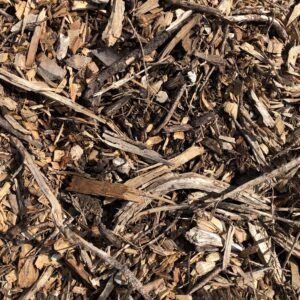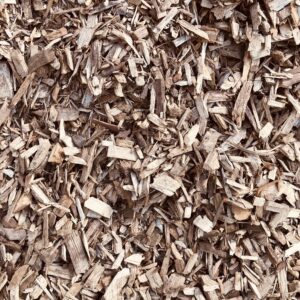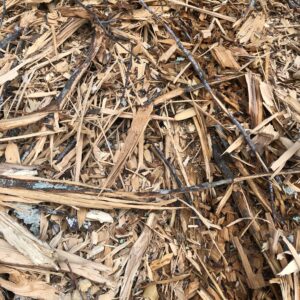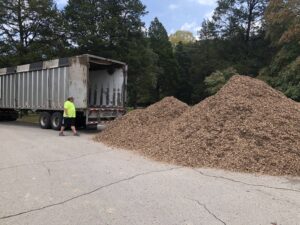Mulch: it seems like a simple thing. You might already put it around your trees and landscaping each year. Maybe you associate it with the pungent manure-like smell that coincides with your annual gardening duties, or with the bi-product of tree work. The resulting product is usually a mixture of sticks, ground up bark and wood, and other organic bits and pieces. This, however, is not the type of mulch we’re here to discuss. We’re talking about playground mulch, which is in a league of its own.
Let’s back up a bit, first. If you are wanting to build a natural playground, your mind may go to all of the fantastic logs, stumps, and boulders that will dot throughout the project, creating an adventure filled environment in which kids can explore and engage in free play. But beneath all of this, you have to choose a surfacing material. In manufactured playgrounds, surfacing innovation has evolved significantly in the last couple of decades. Long passed are the days of packed dirt or even asphalt paved play yards. Now there are playground surfacing safety guidelines which dictate what is an acceptable surface, per The American Society for Testing and Materials (ASTM) standards, which are used by the Consumer Product Safety Commission (CPSC). These standards test every surface material’s shock absorption. But this still leaves a lot of gray area for what type of material is ideal. Somewhere in between the harsh concrete of the 1980’s and today’s rubber uniform surfacing is an alternative: good old mulch.
Now, playground mulch is not the gardening mulch mentioned above. While still obtainable by most landscaping companies, this product has been processed and sorted to ensure fewer splinters, more uniform sizes, and to adhere to ASTM guidelines. The CPSC’s “Public Playground Safety Handbook” has an entire section (2.4.2.2 Loose-fill surfacing materials) dedicated to the appropriate use of mulch, or “loose-fill material”. These guidelines help to provide protection from falls.



Here at Bernheim Forest’s Playcosystem, we recently purchased a semi-truck load of 75 cubic yards of playground mulch to refresh our play areas. If you have trouble conceptualizing just how much mulch this is, check out the photo below.

It’s a lot. And yet, playground mulch never spreads as far as you might think. Especially when you’re spreading it to the recommended safety depths for adequate shock absorption in “fall zones,” around higher playground elements (as recommended in the Playground Safety Handbook). If you’re looking at changing or adding playground surfacing, reach out to us. We’d love to chat more.